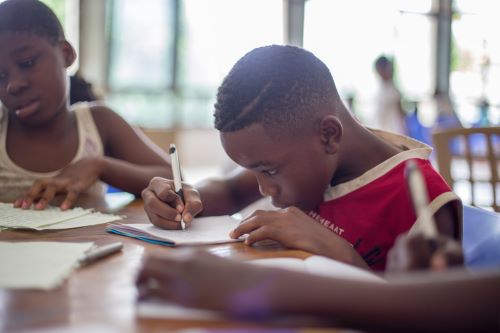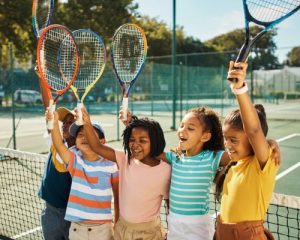
The key to learning is first learning how.
When we talk about education — whether our own, our children’s or other people’s — we talk a lot about the importance of learning. We talk surprisingly little, though, about how to learn.
We fail to address the reasons why learning is hard or wonder if there are things we can do to make learning easier or even more effective.
Training your brain to help the learning process along rather than hindering it is a kind of superpower. It is like possessing a magical key to a secret treasure. It can make life richer, more satisfying and more productive.
What Is Learning?
Learning is the process by which the brain integrates new facts, concepts and competencies. This process starts in the womb, continues through infancy and childhood, and proceeds all throughout adulthood.
Everything we learn adds to our picture of the world, building a more beautiful and complete concept of our surroundings. All organisms adapt to survive, and learning seems to be an ancient, inbuilt capacity to help us survive.
A relic of our time as hunter-gatherers, attuned to the natural world and vulnerable to predators, learning helped us pivot our survival strategies and adapt to our environments. Organisms that do not adapt to their surroundings die and possibly become extinct.
In our modern society, with its comforts and lack of predators, humans that stop learning may not die. However, they experience a different kind of death. They stagnate in their careers and cannot advance. They become set in their ways or unable to adapt to changing cultural landscapes, uncomfortable with popular culture, and have fallouts with their friends, becoming more and more isolated.
Learning is not passive. We participate in our own education. The greatest enemy to learning is thinking you know everything or that you know everything you need to know. This kind of ignorance often grows from fear — fear of learning they are wrong, fear that they will have to admit that they are wrong and adjust their thinking.
One of the keys to lifelong learning is recognizing that you do not know everything and committing to end each day a little smarter.
Why Learning Is Hard
We carry with us a lot of misconceptions about how learning happens. For example, many people think that if your nose is not buried in a book, you are not learning anything.
Nothing could be further from the truth. We have to reflect on what we see, let our mind meander over it, or discuss it with our peers.
People carry the false expectation that learning should be easy. Some things may go down easy if we have a natural talent, but true learning happens at the edge of your comfort zone, where it starts to get uncomfortable. Many people do not want to step out of their comfort zone, afraid they might fail and are unwilling to face the pain of failure.
Commercialized society teaches us to look for silver bullets — the product, the pill, the system, the course that will let us read a book in a day, learn a language in our sleep, learn guitar in an hour.
To make matters worse, life is full of distractions, many of them designed to fit into our shortest unit of attention possible. We live at the pace of the Instagram story, the Hulu commercial, the boss battle.
True learning requires focus. It requires pushing boundaries to the point where we could fail. Our cognitive sponges could fail to take in what we are trying to learn, the first time or any subsequent time.
But failure is also one of our best teachers. That is why extensive hand-holding often makes it harder to retain a new teaching. If we do not have to struggle, it goes in one ear and out the other. To learn deeply and to learn quickly, we have to put in the work, and we cannot be afraid to fail.
Related Posts:
- Experts Point Towards Success in an Online Learning Environment
- Special Needs Learning & The COVID-19 Pandemic
- At-Home Learning for the Working Parent
The Two Ways We Learn
While teaching and learning techniques may seem wildly different, we essentially learn from two different sources:
- Learning from History — We learn from history when we read a book or watch a program about past accumulation of knowledge, or when we listen to stories told by elders or more experienced people.
History is a major source of knowledge. History tends to repeat itself according to patterns of human nature. Meanwhile, the recording of many fundamental truths discovered by our forebears means that we do not have to go through the exhaustive process of discovering them all over again.
But history is a fallible teacher, and history must be read and considered critically. Knowledge can become tradition, ingrained opinion and conventional wisdom, resistant to new breakthroughs. Human individuals and humanity as a whole are constantly discovering and reacting to new sources of knowledge.
There is a half-life to “facts,” and they must be continuously tested and reconfirmed to remain credible as facts.
- Learning from Experience — The other key source of knowledge is direct experience — learning by doing. This can include performing experiments, but also from discussion and interaction. The mind starts to recognize patterns in our interactions. By reflecting on our experiences, we ingrain them as knowledge and pattern recognition.
Learning by experience is best expressed as double-loop learning. If your activities are stuck in a “single loop,” you refuse to learn from your past mistakes and keep making the same mistakes over again.
Double-loop learning, on the other hand, incorporates new data and feedback into the repetition of the loop, allowing the learner to approach the loop with enhanced wisdom and produce a better, more useful, or more illuminating result.
Two Techniques to Learn Better
Many experts — and non-experts alike — claim to have mastered the secret to making learning easier, faster, more fun, etc. Again, there is no magical pill to make learning a snap, but two techniques in particular have been tested and proven to improve people’s ability to learn when they employ them…
- The Feynman Technique — Named after Nobel laureate physicist Richard Feynman, the Feynman Technique involves writing and/or speaking an explanation to the chosen concept as if you were teaching it to a sixth-grader.
Attempting to explain the concept to a young learner allows you to cut to the core of the concept and understand it at a deeper level. It also eliminates the crutch of jargon, which experts and non-experts alike hide behind to conceal the fact that they sometimes do not know what they are talking about.
The basic, even mundane questions that a sixth-grader would ask, force you to home in on the basic details, revealing gaps in your knowledge of the concept that you can return to the source material to fill.
- Spaced Repetition — Spaced repetition is the antidote to rote memorization, which runs contrary to how our minds work. Practicing spaced repetition involves revisiting the concept you are trying to learn, with variations and from different angles, at increasing intervals of time.
You might read a chapter in a book one day, then watch a video the next day that covers the same material but from a different angle. Two days later you might do a practical exercise in the concept, and then watch a different video or read a reinforcing chapter a week later. The intervals get more and more spaced out as your brain becomes more and more used to the concept and is better able to recall the finer details with minimal reminders.
Recognizing the importance of learning is important. Recognizing how humans learn as we set about educating ourselves is equally important, if not more so. It is the lesson that, once learned, enables every other lesson. By letting go of myths and adopting practical techniques, we can turn our brains into our friends and partners, not our enemies, in a lifelong quest for learning.
Anthony Cupo is a trained mindfulness teacher from UCLA Mindful Awareness Research Center, Certified NPL Coach and blogger.
By Anthony Cupo
(Photo courtesy of Santi Vedrí/Unsplash.com)








